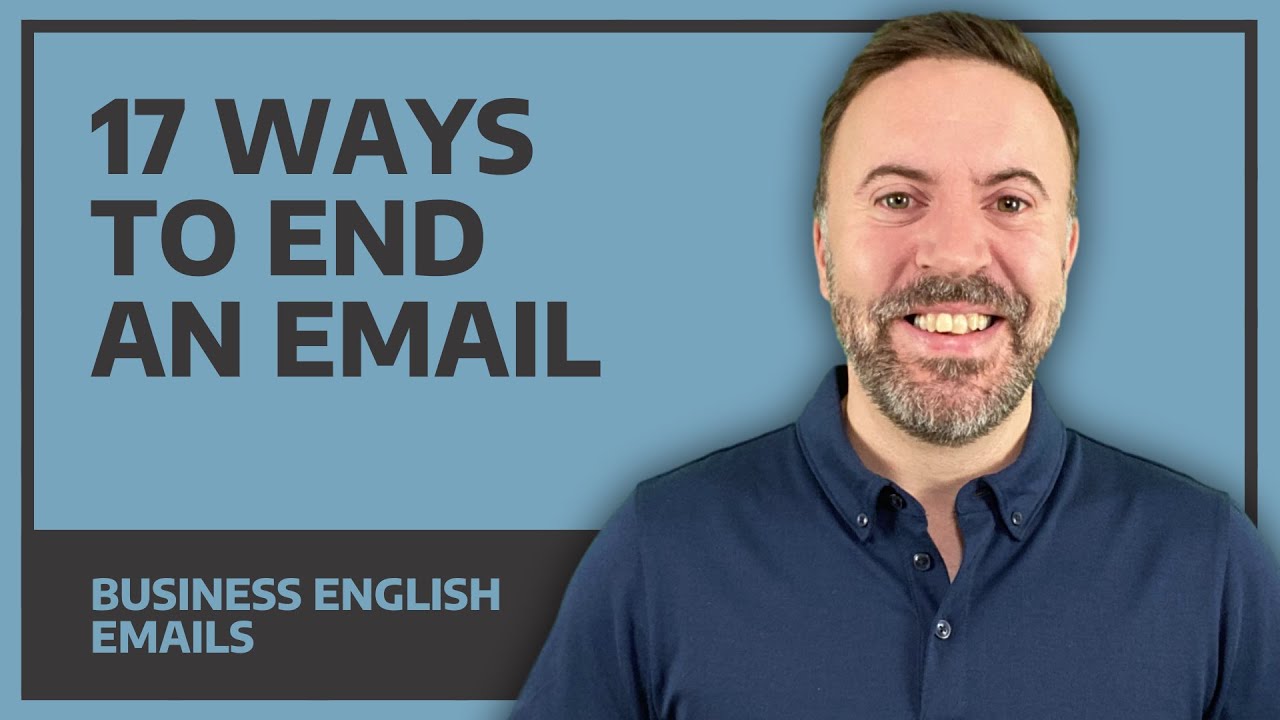Job seekers and employees alike frequently use email as a key mode of contact.
If you want to leave a lasting impression on your reader, it's critical that you craft your email sign-off (the last line of the email and your signature) deliberately.
You can improve your chances of getting a job or promotion by sending concise, professional emails to coworkers, contacts in your network, or even potential employers.We've included some background on how toconclude an email, things to add, and some useful examples to assist you in achieving this aim.

17 Ways To End An Email - Business English Emails
Tips For How To End An Email
Examples of email closings, as well as tips on how to format your closing and the best approach to end an email, may be found in the examples below.
It's important to remember a few factors while selecting an email ending.
- Add A Final Word
One common misconception is that the ending paragraph of an email is optional.As a result, this is a bad idea and should be avoided at all costs.Even if you have an email signature, this is true.
- Pay Attention to Your Relationship to the Recipient
When you're trying to land a new job, it's best to keep your email closings professional."Cheers," "Yours sincerely," and such semi-professional closings are acceptable for close pals.If you're unsure, always opt for a more professional-sounding conclusion.
- Stay Away from Inappropriate Closings
Even if you're close friends, refrain from using insincere sign-offs like "See ya later" or "XOXO" when sending a professional email.
- Please make use of your whole name.
Unless you are writing to a close friend or colleague, don't use merely your first name or a nickname.In order to avoid any confusion, include your entire name.
Professional Email Closing Phrases To Use And Avoid
During the hiring process, it's okay to use less formal concluding words if you're currently employed at the company and communicating with coworkers on a regular basis.
Professional Email Closing Examples
Here are a few of the most common ways to end a professional email:
- Best
- Sincerely
- Regards
- Kind regards
- Thank you
- Warm wishes
- With gratitude
- Many thanks
- Respectfully
Examples Of Email Closings To Avoid
Here are some email closing phrases you should avoid in professional environments:
- Your friend
- Cheers
- Peace
- Thanks a bunch
- Chat soon
- Yours truly
5 Ways To End An Email (With Examples)
Here are five examples of how to end an email, based on where you are during the hiring process.
When Applying For A Job
Thank you for considering me for this position. I look forward to hearing from you!
Sincerely,
Mohammad Rahim
Experienced Sales Professional
123-555-4567
After Completing A Phone Screening
I’ve attached my portfolio for your review. Please let me know if there’s anything else you need.
Warm regards,
Erica Garza
Web Designer & Illustrator
456-555-1234
When Responding To A Meeting Request
I look forward to meeting with you next Monday.
Thank you,
Jeff Richards
Social Media MarketingProfessional
www.portfoliowebsite.co
789-555-4567
After Completing An Interview
I look forward to the next step in the process.
Best,
Anika Patel
Full Stack Software Engineer
www.websitenamehere.com
111-555-6789
When Accepting A Job Offer
I look forward to discussing the details and next steps!
With gratitude,
Yung Lee
Experienced Finance Professional
678-555-6789
Why Your Email Closing Is Important
Despite what you may assume, the final paragraph of your email should not be overlooked.Ending an email the right way can make a big difference.Email closings that are effective can include:
- inspire the reader to take action
- identify the sender in case you need it in the future
- leave a positive impact on the reader
- offer your contact information to the person receiving the gift.
Your email's closing will assist reinforce a positive impression and show recipients that you take pleasure in how you conduct yourself in businesssituations.You may ensure that your email message displays your knowledge, attention to detail, and professionalism by following these suggestions and using these samples to help create your email conclusion.